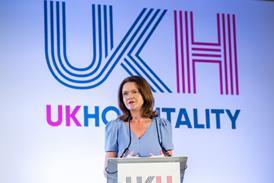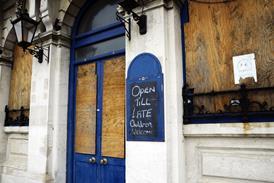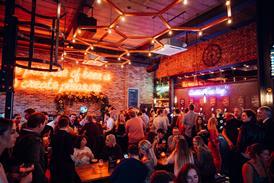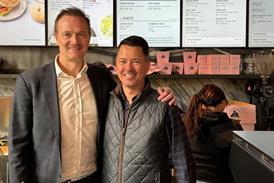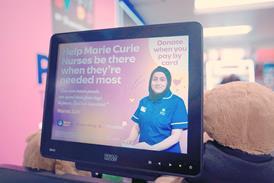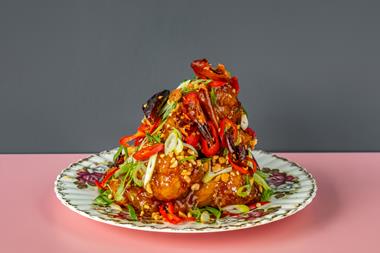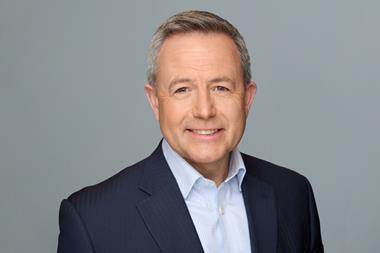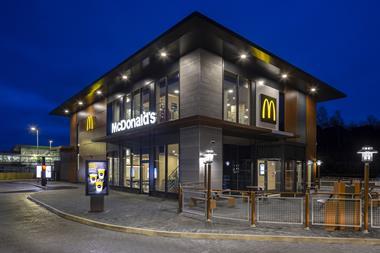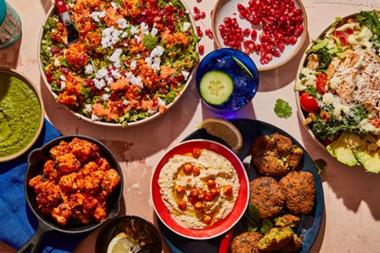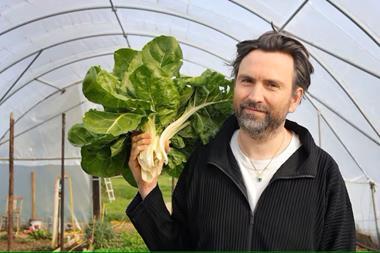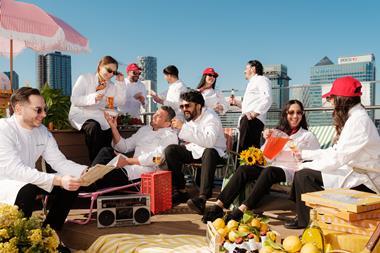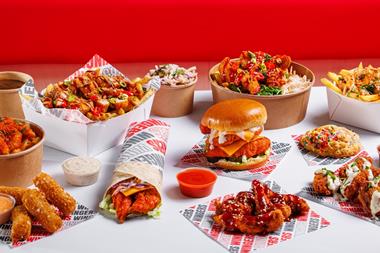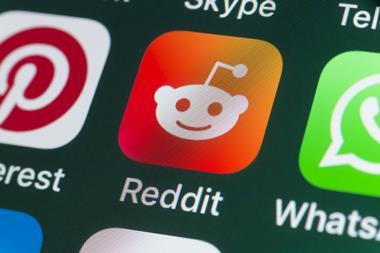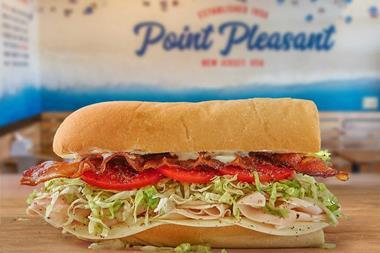Delivery and takeaway are one of the only tangible ways left for operators to serve customers during the coronavirus outbreak.
With consumers no longer able to eat out, common sense logic assumed they would simply transfer spending to delivery.
Yet for various reasons, this has not played out as expected, not least due to the abandonment of delivery by branded restaurants early on in the lockdown.
The loss of key restaurants from the platforms had an immediate impact, with Deliveroo warning of a “significant decline in revenues” and that it could collapse without investment.
An appeal to the Competitions and Markets Authority led to the clearance of a £450m of funds led by Amazon, but could not save the axe of 367 staff, whose redundancies were blamed on the coronavirus.
For consumers meanwhile, the early days of lockdown were characterised by the stockpiling of groceries and cooking at home, and this is a dynamic that seems to have carried throughout lockdown, according to data from MCA and HIM.
Another obvious factor for the loss of volumes is that consumers are anxious about their job security and the likely economic recession to come, according to Steve Braude, who co-leads AlixPartners EMEA travel & leisure sector.
“My view is that we will go into recession, and with a number of people on furlough, on reduced wages, and people nervous about their jobs, people are thinking, I’ll hold onto my money. With eating out and takeaway – people are going to cut back on their spending.”
With the prospect of new custom failing to materialize, delivery is tending to fall back on pre-coronavirus core demographics such as millennials, according to MCA contributing editor Peter Martin, who also works with CGA.
But with the gradual return of big hitters such as KFC and Wagamama, this could boost volumes, he suggests.
“Now those guys are coming back, you can see there’s certainly a demand for going out and getting old favourites, if only witnessed by the queues at KFC and Burger for drive through,” Martin says.
Even if volumes are not there to begin with, it pays to have delivery up and running, Martin reckons, given the uncertainty over when dine-in will be possible and profitable.
“Because the restrictions we’re likely to have for some time, takeout and delivery, drive through, click and collect, it’s all going to be an important part of the market”, he says. “Not necessarily massive in terms of turnover but it’s still something we can build on.”
Martin points to encouraging signs in America, where the market is more mature, and some operators have managed to hold up 60%-70% of revenue through takeaway and delivery.
“Understanding how they manage it there is probably going to be important for how the UK does it, because we’re in for a long haul here. How people adapt is going to be important.”
With many consumers working and for the large part staying at home, the desire for on-demand and convenience, key drivers for delivery, feels less relevant.
But according to MCA market insight director Steve Gotham these needs will return, and to meet this, operators must be able to reach as wide a consumer base as possible, and be present on multiple platforms.
“Delivery has always been something off a double-edged sword for operators,” he says. “It’s great to have extra volume or at least retained volume – but it certainly comes at a cost to margin.
“The point remains that consumers want it and this is not going to be short-lived – the on-demand consumer mindset is part of a growing and evolving added-convenience trend.
“Yes, some consumers might complain about some aspects of the delivery cost and in some cases higher delivery prices, but overall, for the most part, this is an acceptable trade-off.”
Gotham sees part of the added consumer convenience as non-exclusive delivery deals, which make brands such as McDonald’s available to a wider base.
Braude says for an operator like Pret belatedly building a delivery business, it made sense initially to go exclusive with one platform, in this case Deliveroo.
But now Pret has worked out the nuts and bolts of the operation, it was logical to open this up to rival platforms Uber Eats and Just Eat, he says.
“Larger operators need to figure out how delivery works, and it’s often easier to start a new model with one partner,” Braude says.
“You work closely together, there’s less noise, you can make mistakes, and get a good deal on commercial.
“Once you’ve worked out what works and doesn’t, and the economics are right, it no longer makes sense to stick with one partner, because they have limited coverage versus the whole country.
“Then you’re in a better position to negotiate good deals with everyone. And who wouldn’t offer you a great deal to break your exclusivity? It makes less sense to stick with one partner, who may have limited coverage or only a segment of your total customer base on their platform, than it is to partner with multiple operators.”
One UK specific driver here is how people order food. “Consumers are platform loyal,” Braude says. “For a big brand like McDonald’s, if they’re only on one platform, they risk missing out.”
Another development in delivery has been the branching out of the likes of Deliveroo and Uber Eats into grocery delivery, something that started pre-covid, but which has now accelerated.
With supermarket delivery struggling to keep up with demand, Deliveroo is expanding its partnership with Morrison’s and M&S.
Gotham sees this as a short term move by Deliveroo, as it looks to make up lost revenue due to the lack of restaurants.
But Braude suggests a longer-term play linked to Amazon’s investment, which could see it become a last-mile, on-demand delivery partner for the tech giant.
“Tech companies are typically very agnostic about the sector they’re in, they mostly care about streamlining the provision of that product,” he says.
“So Amazon see Deliveroo as a delivery company which just happens to be delivering takeaway food now, and as a way of getting into other things like grocery delivery.”
Nor should Deliveroo’s decision to make 367 staff redundant be necessarily seen as a sign of trouble for the company.
Though blaming the decision on the coronavirus, this is more likely to be the company “not letting a good crisis go to waste”, Braude says.
“Many tech firms grow massively, incur huge costs, and are loss making for a number of years,” he says.
“This is an opportunity for Deliveroo to take stock of their costs base and streamline. There will be a focus on the stable and predictable part of their business.”
An interesting B-plot will be over who comes out on top between Deliveroo or Uber Eats, with Just Eat having consolidated its top spot at least in terms of coverage with the Takeaway.com merger.
Uber CEO Dara Khosrowshahi has explicitly said the company would pull out of any market where it was not number one or two, so a departure or buy-out among the top three seems likely.
A key question remains though, over how to create a food delivery business model that is profitable for the delivery companies and restaurant operators.
Braude says in order for this to happen, consumers must be prepared to pay more, because the model is not currently sustainable for the restaurants or tech platforms.
“In food delivery, pricing is skewed in favour of customers to build take-up,” he says.
“The question is, will the consumer pay more? They have to. It’s the only way these companies will become profitable.
“Restaurants won’t keep on paying higher commission rates to subsidize customers. Ultimately prices will have to increase for the customer if it’s going to be a profitable, viable business model.”
Martin agrees that like many aspects of life as we know it, the crisis will force a fundamental change in the way things are done.
“Everyone’s talking about restarting, but it’s not restarting, it’s starting from scratch basically,” he says.
“You’ve got to have that mindset, because it’s not going to be like it was before.
“The industry’s got to rethink how delivery is going to work and perhaps the old model is not the one we should be following.
“It’s a matter of understanding what that relationship needs to look like going forward, so people can try and make a bit of a living out of it, because It’s going to be tough for everybody.
“We will not be going back to what life used to be before, it will be different. it’s a matter of understanding those relationships are going to be different. You better start thinking about it.”
Precis
ANALYSIS
Navigating the double edged sword of delivery
Delivery and takeaway are one of the only tangible ways left for operators to serve customers during the coronavirus outbreak. With consumers no longer able to eat out, common sense logic assumed they would simply transfer spending to delivery. Yet for various reasons, this has not played out as expected, not least due to the abandonment of delivery by branded restaurants early on in the lockdown. This loss was a huge blow to the delivery companies, with Deliveroo warning of a “significant decline in revenues” and that it could collapse without investment. An appeal to the Competitions and Markets Authority led to the clearance of a £450m of funds led by Amazon, but could not save the axe of 367 staff, whose redundancies were blamed on covid-19.

